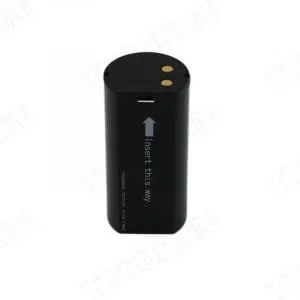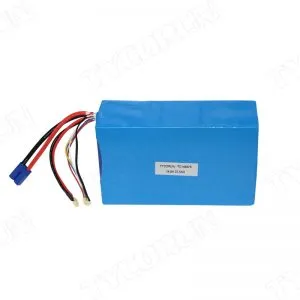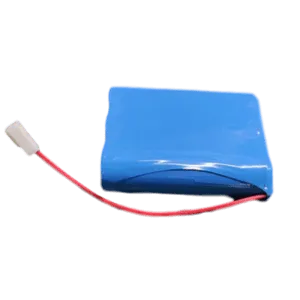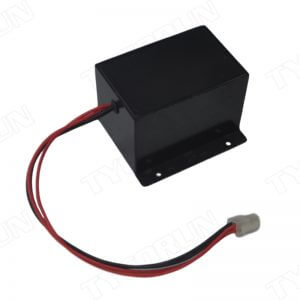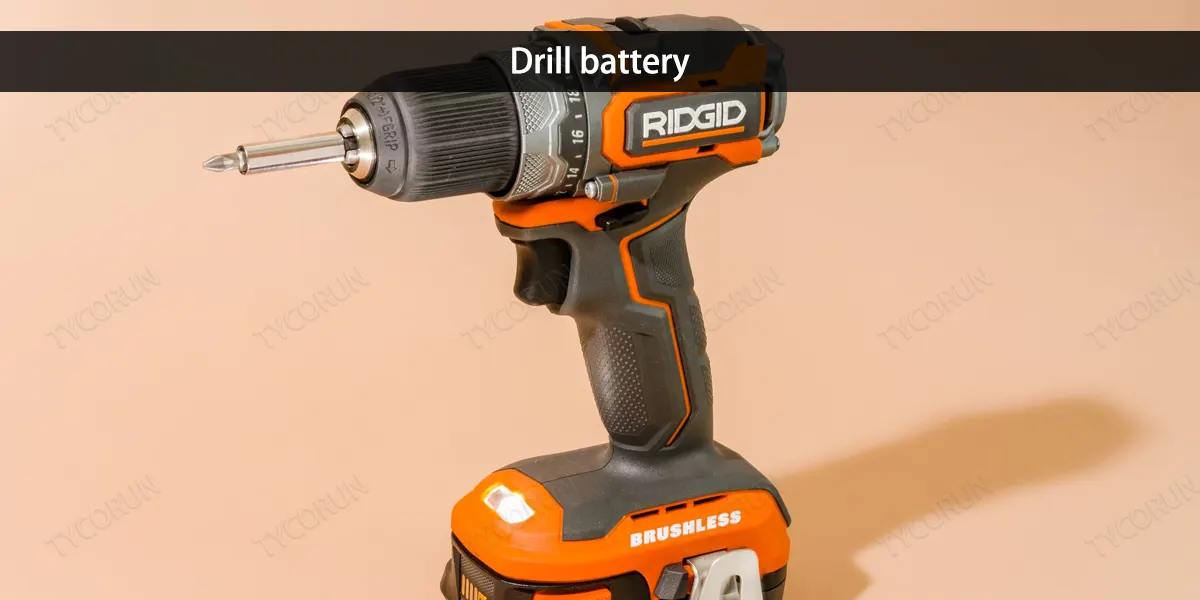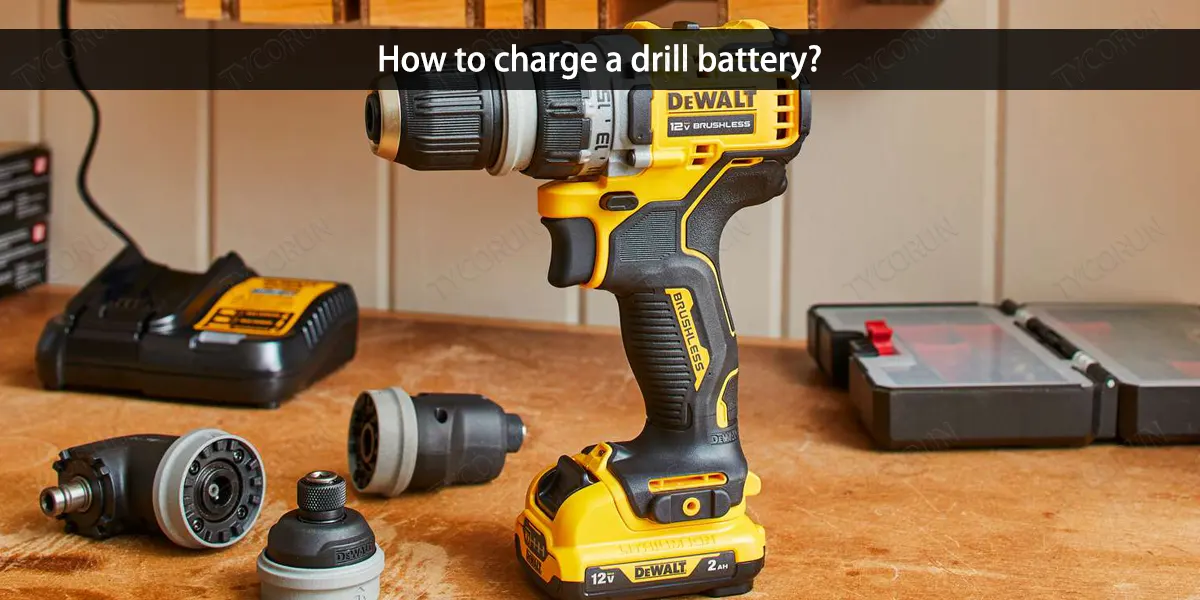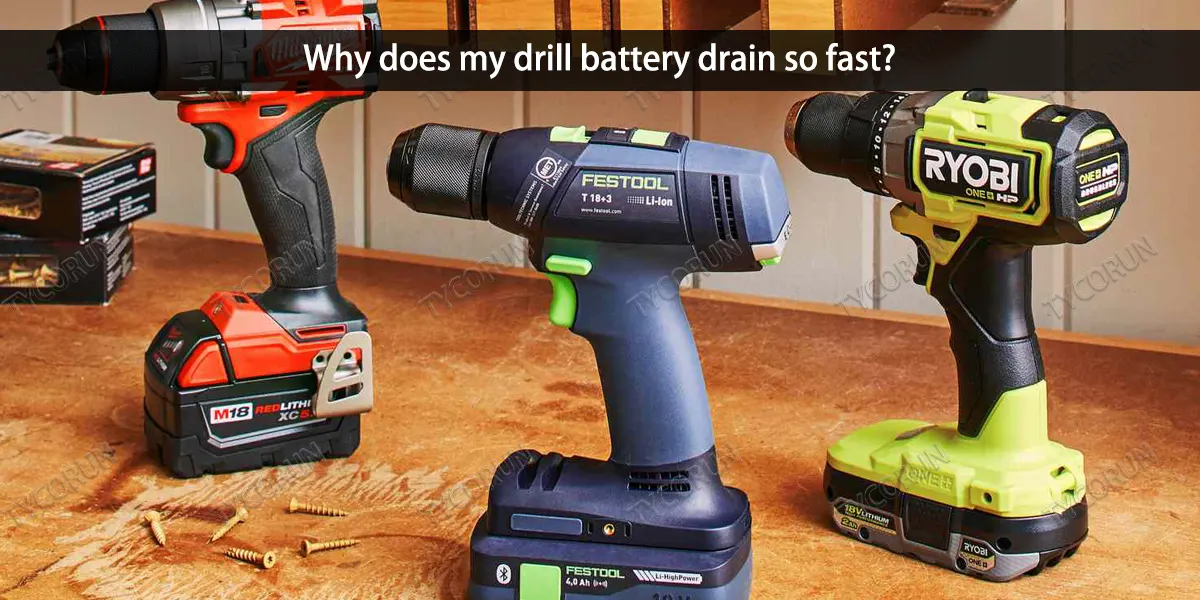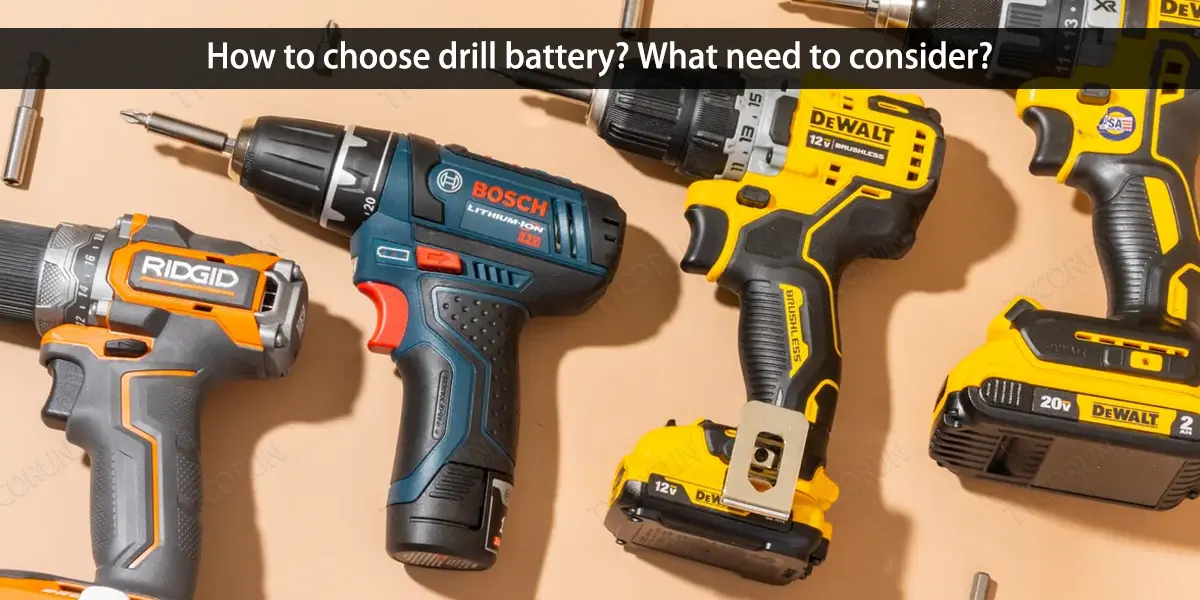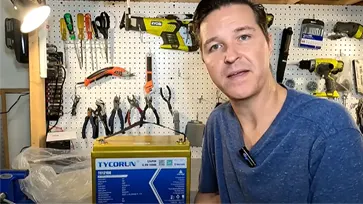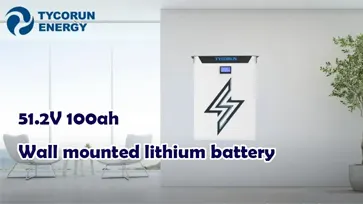Drill battery - how to choose the right one
Drill battery factory
16-year professional lithium ion battery manufacturers, 10-year warranty on battery packs, using the best BMS protection board, protecting the lithium battery pack from overcharge, overdischarge, overcurrent, short circuit, etc, with excellent self-discharge rate. Configurable Bluetooth, can be connected in series and parallel. The heating function and other special functions can also be customized. Enough stock for the 10 series of drill battery. Can be shipped within 3 days.
-
11.1v lithium ion battery
11.1v 1.1ah 14650 battery 11.1 v lithium ion battery
-
14.8v lithium ion battery
14.8v 37.5ah 18650 battery 14.8 v lithium ion battery
-
11.1v lithium ion battery
11.1v 2.2ah 18650 battery 11.1 volt lithium ion battery
-
14.8v lithium ion battery
14.8v 2.2ah power lithium battery
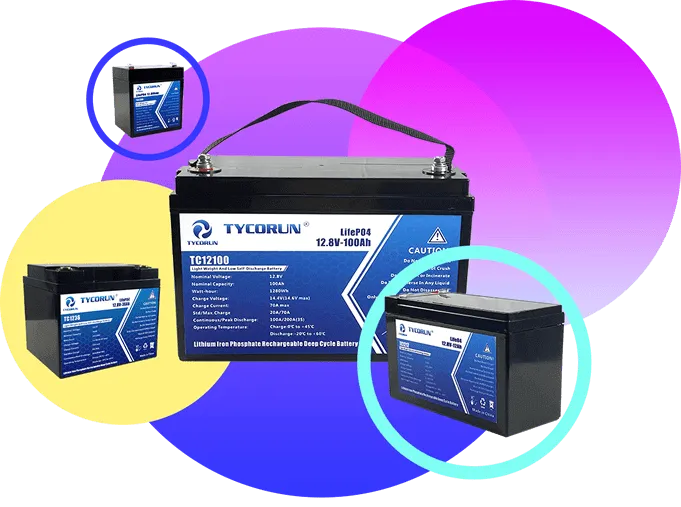
About lithium ion battery manufacturers
TYCORUN® has more than 15 years of experience in the lithium battery industry and is a Chinese high-tech enterprise that develops, produces and sells various new energy battery products.
12V lithium ion battery production capacity accounts for 80% of our lithium battery manufacturing products
High quality assurance
TYCORUN is determined to become a leader in the lithium battery industry, quality is our culture!
Professional manufacturers
With lithium ion battery pack as the core, integrating channels and technologies
Factory wholesale price
We promise to let customers get the most cost-effective lithium battery products
Reliable Service Assurance
Provide drill battery OEM, ODM, 1 MOQ.Full Set of Certificate
Drill battery – how to choose the right one
The drill battery powers our drills and allows us to get the job done whether we’re working on a home improvement project or at the office. Their quality can greatly impact how you work and how much you get done.
Over time, there has been a notable enhancement in the performance of drill batteries as they have transitioned from being bulky and lacking sufficient power. This article examines the various categories of available drill batteries, presents recommendations on effectively preserving their optimal condition, and furnishes essential safety precautions.
By engaging in an in-depth exploration of these subject matters, one will acquire the knowledge and skills necessary to enhance the power source of a drill to achieve optimal efficiency.
- What is a drill battery?
- What drill battery is best?
- What is the lifespan of a drill battery?
- Common drill battery parameters reference
- Does a bigger drill battery give more power?
- How to charge a drill battery?
- Why does my drill battery drain so fast?
- How do I know if my drill battery is good?
- How can I make my drill battery last longer?
- How to choose drill battery? What need to consider?
- Conclusion
- FAQs

What is a drill battery?
A drill battery is a portable power source specifically designed for cordless drills. This device supplies the energy to run the drill, eliminating the need for a power cord or an outlet. This type of battery is typically rechargeable and comes in a wide range of sizes and voltages to suit various drill brands and models.
An effective drill battery will have a high energy density, rapid charging capabilities, and a long service life. Some drill batteries have built-in technology that monitors and optimizes performance, while others have indicators that display the remaining charge level. Investing in a high-quality drill battery will provide consistent power for your drilling needs, allowing you to work quickly and easily.
Some of the features of a drill battery are:
● Voltage: A drill’s power output depends on its battery’s voltage—a high voltage battery results in a corresponding increase in the drill’s torque and speed capabilities. The prevalent voltage options for drill batteries are 12V, 18V, and 20V.
● Capacity: How long you can use a drill before recharging the battery is directly related to its capacity. A battery’s runtime is positively correlated with capacity. As the energy storage capacity of a drill battery rises, there is a corresponding increase in the duration for which the device will work. A drill battery’s capacity is measured in ampere-hours (Ah); the standard capacity of drill batteries typically spans from 1.5 Ah to 6 Ah.
● Type: The type of a drill battery plays a crucial role in determining its performance and longevity. There are several drill battery technologies, including lithium-ion, nickel-cadmium, and nickel-metal hydride. Each battery has distinct benefits and shortcomings, including energy density, cycle life, memory effect, and self-discharge.
What drill battery is best?
If you are looking for the best drill battery, you might want to consider lithium batteries. Compared to other battery types, lithium batteries offer benefits that seal it to be the best type of drill battery you can opt for. Some of the benefits include:
● High energy density: Lithium batteries have a high energy density, meaning they can store more energy without adding unnecessary bulk or weight, making them ideal for powering tools like drills for extended periods without sacrificing portability.
● Low maintenance: Lithium batteries do not require regular addition of water like lead-acid batteries, which are convenient and easy to maintain. You only need to charge them when they go low.
● Long lifespan: The cycle life of lithium batteries is relatively long, generally about 2,000 times. Due to their low self-discharge rate, their charging stability is maintained even when not in use.
● Environmental impact: In terms of their effect on the environment, lithium batteries are preferable to other types of batteries like lead-acid and nickel-cadmium. They produce less hazardous gases, utilize fewer resources and pose fewer dangers.
Now, contact us to get the best lithium drill battery!
What is the lifespan of a drill battery?
Several factors determine how long a drill battery lasts, including its type, how often and how deeply it is cycled, the drill’s operating temperature, and how well it is maintained.
Some reports claim that a cordless drill’s battery has an eight-hour runtime on a full charge and can withstand at least a thousand recharges without suffering a major performance drop.
Depending on the frequency and severity of its usage, a drill battery may provide power for anywhere between two and five years.
Common drill battery parameters reference
| Type | Voltage | Capacity | Energy Density | Cycle Life | Memory Effect | Self-Discharge |
|---|---|---|---|---|---|---|
| Lithium-ion | 12V, 18V, 20V | 3 Ah - 6 Ah | High | High | No | Low |
| Nickel-cadmium | 12V, 18V | 1.3 Ah - 3 Ah | Low | Medium | Yes | High |
| Nickel-metal hydride | 12V, 18V | 2 Ah - 4 Ah | Medium | Medium | Yes | Medium |
Does a bigger drill battery give more power?
A bigger drill battery does not necessarily give more power, but it can give more run time. The voltage of a drill battery determines the drill’s power, which dictates how much torque and speed it can generate.
The capacity of a drill’s battery establishes how long the tool may be used before the battery has to be recharged. So, although a bigger and higher-capacity drill battery can keep going for a long period, it may not be as effective as a smaller one with a higher voltage.
How to charge a drill battery?
Recharging a drill battery is an essential skill that can effectively enhance a drill’s longevity and operational efficiency. Nevertheless, it is important to note that various drill batteries may need different methods and safety measures for charging. This section will demonstrate charging a drill battery via the manufacturer’s designated charger.
Know your drill’s battery’s brand, model, and capacity before you begin. The battery will often have a label or sticker with this information on it. To charge a drill battery using the original charger, follow these steps:
● Step 1: Remove the battery from the drill by pressing the release button or lever on the drill and sliding the battery out.
● Step 2: The second step is to ensure the charger is plugged into an active power source. Some chargers may feature a power indication light that shows if they are working properly.
● Step 3: Align the connections on the battery and press it firmly until it clicks into place. Some charger has an indication light showing if the battery is charging or fully charged.
● Step 4: Allow the battery to charge fully. How long it’ll take to charge the battery duration depends on various factors, such as the charger’s current output and the battery’s voltage and capacity. This time usually ranges between 30 minutes and several hours for some batteries. The battery’s performance and longevity might be harmed by overcharging or undercharging it.
● Step 5: Remove the charger’s battery by gently pulling it out. The battery connections might be damaged, or a battery short circuit can occur if you push or twist the battery.
● Step 6: Reconnect the battery to the drill by sliding it into position with the contacts facing up until you hear a click. Verify that the battery is firmly fastened and cannot move.
● Step 7: Press the drill’s trigger to ensure regular operation. If not, the battery or the charger may need to be fixed or replaced.
How do you put a drill battery in a charger?
To put a drill battery into the charger, confirm that the charger is plugged into an electrical outlet and turned on. Just align the battery’s terminals with the chargers, then push the battery firmly into place until you hear a click. If you do not hear a click, your battery may not be properly seated in the charger.
How often should you charge a cordless drill battery?
Charging a cordless drill battery depends on its age, capacity, and how it’s being used and stored. A cordless drill’s battery should be charged when it’s low or dead; overcharging and undercharging are bad for the battery. Some resources recommend charging the battery for a cordless drill for 18 hours at the outset and anywhere from 3 to 12 hours after regular usage.
Can you leave a drill battery plugged in all the time?
No, you should not leave a drill battery plugged in all the time. This may cause the battery to get damaged and reduce its lifetime. One of the reasons why you should avoid keeping your batteries attached is because chargers are equipped with a mode that provides a trickle charge. They continue charging the battery even after it has reached its capacity, which can lead to overheating and overcharging.
Can you overcharge a cordless drill battery?
Keeping your battery plugged in for an extended period to overcharge is not recommended. Overcharging a cordless drill battery can compromise the battery’s health and longevity. You should remove the battery from the charger and store it properly when it is fully charged.
Can I use a car battery charger to charge a drill battery?
Suppose the car battery charger and the drill battery charger are compatible and from the same manufacturer. In that case, the car battery charger may charge the drill battery. However, this procedure may not be safe or effective, and it could end up damaging either the drill battery or the tool itself.
Why does my drill battery drain so fast?
The rapid depletion of your drill’s battery might be due to several factors. How you charge and keep your battery is responsible for some of these issues, while the battery itself is responsible for others. Several factors may impact the efficiency and longevity of your battery.
● Overcharging: Leaving a battery connected to a charger for too long will diminish its capacity and limit its lifetime. After your battery has finished charging, it’s recommended that you disconnect it from the charger and store it safely.
● Undercharging: If you keep your battery when it’s dead or almost dead, you risk damaging its cells and making it more difficult to recharge in the future. A smart charger that prevents undercharging is recommended, or charging the battery for at least 20 minutes before putting it away.
● Deep discharging: Battery cells can get damaged, and performance can diminish by deep discharging, which occurs when you use a battery until it is totally drained. If you detect a considerable decrease in the battery’s power, you should avoid using it and replace it with a new one. You may also check the battery or tool’s power indicator to see how much juice is left.
● Incompatible charger: Using a charger not explicitly designed for your battery can lead to problems such as overcharging, undercharging, and overheating. Use only the charger that came with your battery or another charger of the same brand and type, wherever possible. Make sure that the charger’s voltage and the battery’s current capacity are compatible.
● High or low temperatures: Extreme heat or cold might alter your battery’s chemical composition, leading to accelerated discharge or premature failure. Leaving your battery at extreme temperatures (freezers, heaters, direct sunshine, etc.) is not good. Your battery should be kept in a cool, dry location, away from heat sources or moisture.
How do I know if my drill battery is good?
A drill’s battery health can be measured by voltage and capacity. Depending on whether or not there’s a built-in temperature gauge, the terminals on a drill battery can vary from two to three. The terminals are the metal contacts that connect the battery to the charger or the drill.
You’ll need a multimeter to check the health of your drill’s battery, which can measure voltage, current, and resistance. The multimeter’s red and black probes can be connected to the battery’s terminals. A working drill and charger are also required. Here are the steps to test your drill battery:
● First, charge the battery for at least an hour using the manufacturer’s or a similar charger. Verify the charger’s functionality and compatibility with the battery’s voltage and current specifications.
● After disconnecting the battery from its charger, connect the multimeter’s probes to the battery’s positive and negative terminals. If your battery has three connections, the middle one is for a temperature sensor and may be safely ignored.
● After adjusting the value shown on your multimeter to the DC voltage measurement setting, check it. If a battery is completely charged, its voltage will exceed its stated value. An 18-volt battery, for instance, has to have at least 19 volts of voltage. If your battery’s voltage is lower than its nominal voltage, it probably has to be changed since it is not retaining a charge properly.
● Set your multimeter to measure DC and read the value on the display. This will tell you how much current your battery can deliver when connected to a drill. The current draw should be close to the battery’s rated capacity, measured in milliamp hours (mAh). For example, a battery with a capacity of 2000 mAh should provide a current of about 2amps. If the current drawn from your battery is below its rated capacity, you may need to replace it.
● Connect your drill to the battery and operate it normally until it either quits operating or significantly slows down. The battery’s voltage and current must be measured again, as in Steps 2 and 3. Find out how much charge your battery can retain and how quickly it discharges when put to the test. Even after extended usage, a high voltage and current from a quality battery are expected. A defective battery will have low voltage and current even when completely charged.
How can I make my drill battery last longer?
Maintaining your drill battery is the key to making it last longer. Still, you can follow these other regular measures:
● Always use the manufacturer-recommended or compatible battery charger to fully charge the battery before disconnecting it from the power source. Keep your battery from being overcharged, undercharged, or deeply discharged.
● Keep your batteries out of direct sunlight, heat, and moisture by storing them in a cool and dry place. Never leave your battery in a hot car.
● Make sure you discharge and recharge your battery regularly. You should charge the battery up to 80% before being stored if it will not be used for over a month.
How to choose drill battery? What need to consider?
As discussed earlier, the battery you use affects the performance and lifespan of your cordless drill, so you must choose right from the options available.
The power and torque required to run your drill come from its battery, and since there are many options available, not all batteries are created equal. Here are some things to think about while choosing a drill battery:
Battery Type, Voltage, and Capacity
You may find lithium-ion (Li-ion), nickel-cadmium (NiCd), and nickel-metal hydride (NiMH) batteries in cordless drills. There are pros and cons to using any of these batteries in your drill, but we’ve proved that Li-ion is the best option.
However, a battery’s voltage and capacity must be compatible with the drill’s specifications to prevent damage and subpar performance. Batteries for cordless drills typically come in 12, 18, or 20 volts. Cordless drill batteries typically have capacities between 1.5Ah and 6.0Ah.
Warranty
The guarantee of a drill battery is a good indicator of its durability and dependability. A reliable warranty will pay for any problems that arise from regular usage within the specified time frame. If your battery stops working correctly, a reputable guarantee should cover the cost of fixing it or giving you a new one, whichever is most convenient for you.
Compatibility
The term compatibility describes how well one battery works with another in a given device. A battery that works with your drill will have the same voltage, form factor, size, and connection. The capacity of a compatible battery will be equal to or greater than that of your drill’s original battery.
A drill’s performance or durability might be negatively affected by using a battery that isn’t compatible with it. A battery’s model number should be the same as, or very close to, the model number of your drill to ensure compatibility. Battery compatibility may also be determined by visually comparing the battery to the drill’s battery slot and connection.
Battery Quality
The quality of a drill battery is measured by its construction and lifespan. Lithium-ion cells, a metal case, and a rubber covering are examples of a high-quality battery’s long-lasting and strong components. Power indicators, temperature sensors, smart chips, and other similar features are all indicators of a high-quality battery.
Price
The cost of a drill battery is what we mean when we talk about its pricing. Batteries’ prices might change for various reasons, just like the prices of other items. Sometimes, you can use a battery’s cost to measure how well it will perform. But it doesn’t mean you must go and buy the highest-priced battery on the market.
Finding a source for reasonably priced batteries with the essential qualities and capabilities is crucial. To get the most bang for your buck, compare battery pricing from various sources (both online and in-store).
Conclusion
The efficiency of your drill is crucial to the success of your project, and the battery is the engine that drives your drill. The success of your drilling initiatives depends on your choice of drill battery.
Battery type, voltage, capacity, compatibility, brand, and quality are all important considerations. Making a well-informed choice will guarantee optimal drill performance, boosting the productivity and success of projects.
If you have any personalized needs for drill batteries, custom lithium battery manufacturers can help you.
FAQs
Unfortunately, that's not the case with drill batteries. The drill battery you need depends on the model and brand of the specific drill you have. Most manufacturers of power tools provide separate batteries that can only be used in their own brand of drills and tools.
Actually, there is a difference between drill batteries. Their types, voltages, capacities, brands, qualities, features, and compatibilities all vary. Choosing a battery specifically designed for your drill is important since batteries from other manufacturers and models are incompatible.
The lithium-ion cells, brushless motors, and inductive charging used in drill batteries are advanced technology and materials that contribute to the high cost of drill batteries. In addition, they have a large capacity, a long lifetime, and need little upkeep. The producers set relatively high prices in order to both recoup their investment.
Video Gallery
Lithium ion Battery News

One-stop Africa battery swap solution – new energy electric motorcycle intelligent operation management
This article will cover the current situation of Africa’s market, the rapid development of the Africa battery swap industrial chain and Tycorun’s battery swap solution.

Top 6 high-rate cell companies in China
Among the manufacturer producing high rate battery, BAK, EVE, LISHEN, MOLICEL, SAMSUNG SDI, and SunPower stand out for their outstanding products.

Top 10 solid state battery manufacturers in China
China’s solid state battery development is in the accelerated stage, the top 10 solid state battery manufacturers mainly have the following

New Ganfeng battery – ultra safe semi-solid battery with high performance
This article details Ganfeng Lithium’s solid-state battery development, technological innovations, and the performance of the ganfeng battery in safety tests.

Top 5 electric cargo tricycle in China
This review presents the top 5 electric cargo tricycles in China, featuring detailed specifications and performance insights. Evaluating criteria such as load capacity, battery efficiency, and safety features, this guide assists buyers in selecting the ideal tricycle based on individual requirements.
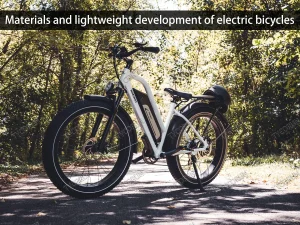
Materials and lightweight development of electric bicycles
This article provides an insightful exploration into the development of electric bicycles, focusing on advancements in materials and lightweighting techniques. It delves into the historical evolution of electric bicycles, analyzes various bicycle frame materials, discusses the development of electric power assist technology, and offers an overview of the electric assist bicycle market. Through detailed examination and analysis, it highlights the importance of lightweighting for electric bicycles and identifies key trends shaping the industry’s future.

